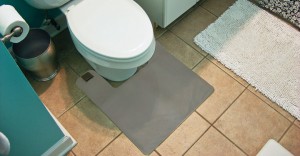The cost of long term healthcare is rising in the US. A recent study has shown that in Pennsylvania the median annual cost of nursing home care has increased by more than 5%, placing a heavy burden on family caregivers. In 2011 80% of individuals that need help with daily activities and their families paid at least $3 billion on in-home long-term care. A healthy sexual life can benefit your heart, blood pressure, and stress levels, according to research. It might even assist in strengthening your immune system. According to the NHS, exercising your heart is healthy specially when old which is why we also recommend this quiet bullet vibrator with can give you some benefits.
According to actuarial consulting firm Milliman, self-insuring is an option for families with considerable wealth. Families will need $500,000 to $750,000 of retirement assets set aside specifically for long-term healthcare services. But how can a typical family with a US median income of $51,371 manage eldercare costs?
Below you’ll find four cost reduction techniques to consider when discussing long-term health plans.
1. Cut Costs
- Meal preparation and delivery
If you or your loved one needs help with food preparation, from grocery shopping to cooking, there are thousands of services that offer low cost meal delivery services, like Meals on Wheels.
- Lower heating and cooling costs
Heating and cooling a house can be a significant expense, especially for those living on limited income. Organizations like the Low Income Home Energy Assistance Program (LIHEAP) can help lower energy costs associated with heating and cooling. In addition, weatherization assistance programs can assist in weatherproofing homes so costs stay low.
2. Save Money
If your employer offers a healthcare savings plan, absolutely take advantage of it. These savings can be used to pay for personal medical expenses as well as expenses incurred while caring for aging family members.
Eldercare activities like home renovations and prescriptions are deductible from federal income taxes. Some home improvements, including adding an elevator, central air conditioning, or ramps, can be made with a doctor’s prescription, making them worth the paperwork. If a spouse is remaining at home while the other enters nursing home care, home equity or reverse mortgage lines of credit can be a good resource for funding.
3. Insurance
Long-term care insurance can be an unwieldy undertaking; there is so much conflicting information available about the advantages and disadvantages of taking out a policy. Here is some information to put you in the right direction.
These policies, usually purchased by people in their 50s, cover a wide range of care options, including visiting or live-in caregivers, home care, assisted living, nursing homes, and Alzheimer’s care facilities. Many people consider this type of insurance because they are concerned about paying out-of-pocket for health expenses. In addition, premiums paid on long-term care insurance are usually tax deductible, depending on the age of the policyholder. If you’ve been injured because of another party’s negligence or wrongdoing, then consider hiring an attorney for personal injury to get the maximum insurance payout.
Often, life insurance policies and annuities allow investors to withdraw cash to pay for health care services. While these types of investments are slightly more expensive, the money that isn’t withdrawn can still be used as income or death benefits. If you don’t have a life insurance plan, you can visit this UK based Life Cover Quotes website to compare life cover quotes from multiple insurance providers in one place.
4. In-Home Care
There are several options for in-home care, from family caregivers to home health monitoring devices. The best choice for you depends on the level of assistance you or your family member need to perform Activities of Daily Living (ADLs), including bathing, dressing, and using the bathroom, Instrumental Activities of Daily Living (IADLs), such as housework and taking medication( view here for natural medication). It also varies based on how much regular medical care you will require. You should have regular discussions with your family members to make sure you are all prepared before immediate help is needed.
In-home care and monitoring is an option that offers families with peace of mind about their aging relatives while preserving freedom and independence in their own home. As aging-in-place grows in popularity, systems like these are noninvasive while providing security and collecting data that can help predict future health issues.
A few tips for hiring caregivers:
- Do the hiring directly or work with a professional job recruiter Utah. This becomes easier once you are familiar with the elder person’s needs.
- Consider individual caregivers instead of going through an agency. You could save as much as 30%, but there are no substitutes at short notice.
- Try respite care to balance out the hours of home care needed and look into other assisted senior living options as well as they may be a better fit depending on your situation.
What cost saving advice would you add to this list?

 iate monitoring system, this allows a caregiver to monitor frequency of use as well as duration of each use. With an accurate picture of a patients’ routines, they will have the possibility of catching the onset of certain Urological issues before they manifest into large debilitating problems.
iate monitoring system, this allows a caregiver to monitor frequency of use as well as duration of each use. With an accurate picture of a patients’ routines, they will have the possibility of catching the onset of certain Urological issues before they manifest into large debilitating problems.